A detailed guide to choosing a carob coffee maker. Overview of all device types
If you can't start your day without a cup of coffee, then it makes sense to get a coffee bean coffee maker for ground coffee.
After all, with the help of it you can cook not only a classic drink, but also a tart espresso or cappuccino with air foam.
In this article, we will talk in detail about this device and teach you how to find what you need in a sea of various household appliances.
What is a carob coffee maker?
Carob coffee maker – This is a device for preparing hot invigorating drinks, which differs from other coffee makers in the shape of the container in which coffee raw materials are placed. It is a special horn. The size of this part may vary depending on the power and performance of the coffee maker.
The carob method is more economical than the drip method – you can easily adjust the desired amount of coffee. The finished drink is enough for several servings, but its taste is worth it - it is their carob coffee maker that produces the richest espresso.
How is it different from a coffee machine?
What to buy - a coffee maker or a coffee machine? The answer to this question depends on what result you plan to get and how often you want to use the device.For one person or a small family, a carob coffee maker would be the best option. If the device is intended for a large family of coffee lovers or an office, give preference to a coffee machine.
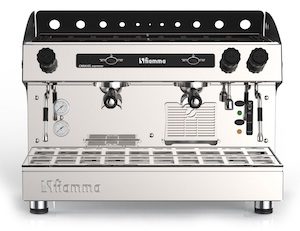
The coffee maker, in comparison with the machine, requires more participation, but, as a rule, coffee connoisseurs spare no time to prepare a drink with a rich taste and aroma.
When choosing a coffee maker First of all, pay attention to the specifications, not the brand. Often you can easily find complete analogues of popular coffee makers that will cost half as much just because the manufacturer did not spend a lot of money on brand advertising.
Who are these devices suitable for?
An espresso-type coffee maker is what you need if you want to drink espresso and other coffee-based drinks every day.
However, if you prefer classic turkish coffee, geyser coffee, or other alternative brewing options, then a carob coffee maker may not be able to meet your needs.
Types, their features, advantages and disadvantages
The main distinguishing feature of this type of coffee maker is the presence of a horn. The horn is a handle, at the end of which there is a holder of a round filter, where raw materials are placed.. Consider several types of similar devices
Bespompovye (boiler)
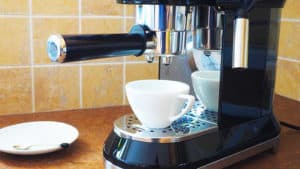
The pressure level in boiler coffee makers usually ranges from 2 to 4 bar, and for high-quality espresso it must be at least 8. Accordingly, such coffee makers can make something similar to a strong Americano, but no more.
Examples of similar coffee makers:
- Scarlett SC-037;
- Polaris PCM-4002A;
- Redmond RCM-15.
pump action
The pressure in the cooking chamber is provided by a water pump. Coffee makers of this type are divided into two main subclasses:
- Home / household / primary / middle class. The design involves a vibration pump, that is, the water is heated by an oscillatory method, due to the movement of the piston up and down. Their main disadvantage is that the pressure is uneven, but for beginners in making coffee, it will be almost invisible.
- Professional/commercial/industrial grade. The design involves a rotary pump. The motor rotates the impeller, which scoops up and pushes water through the hydraulic path at a constant speed. It is thanks to this stability that the tart and correct taste of espresso is achieved. Such pumps are quite large, and the coffee maker itself is noticeably more expensive and is often used in coffee shops and restaurants.
Professional subclass - lever
The pressure is reached and adjusted manually by pressing a mechanical lever. Thanks to this mechanics, the barista can control the extraction during the preparation of the drink. Due to the low degree of automation, lever coffee makers are not as popular as others.
How to choose the best model for a middle-class home
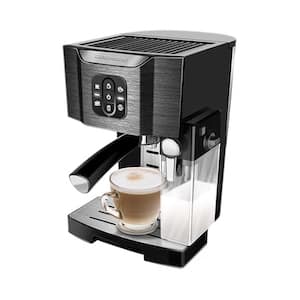
When choosing "kitchen assistant" be sure to pay attention to the following parameters:
cappuccinatore
In most cafes and restaurants for making cappuccino, they use coffee makers with cappuccinatore. This is a nozzle that whips and heats milk at the same time with hot steam. It is very convenient to use - a drink with a dense and thick foam is obtained in a matter of seconds.
In turn, cappuccinators are of two types:
- Semi-automatic cappuccinatore. The coffee maker prepares cappuccino in two steps: first brews coffee, then heats milk and froths. Most often, such machines are equipped with two faucets, you need to move the cup between them yourself. There is no separate compartment for milk in the device. Such a coffee maker is suitable for those who are just learning the basics of making an invigorating drink. They are affordable and easy to use. A semi-automatic machine is not suitable for professionals and sophisticated coffee connoisseurs due to the fact that it is impossible to adjust the density of milk foam in it. In addition, such a device needs regular maintenance and cleaning.
- Automatic cappuccinatore. Unlike a semi-automatic machine, it has an external milk compartment connected to the coffee maker with a tube. In some coffee makers, this compartment is removable, which is very convenient if the remaining milk needs to be removed in the refrigerator. Just like semi-automatic machines, they need regular cleaning of the milk supply pipes. The function of adjusting the density and amount of foam is only in high-end coffee makers.
Water tank, what are and what they affect
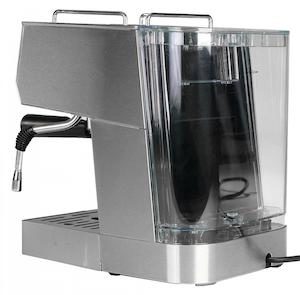
As for the material, there are two types of tanks:
- Plastic - budget and affordable option. Often breaks, stains and absorbs odors.
- Metal - warms up quickly, does not overgrow with plaque, easy to clean. It costs much more than plastic.
pressure pump
In 80% of cases, the manufacturer installs a pump (vibration pump) made in Italy by ULKA or CEME.
Heating element
There are several types of heating elements:
- Thermoblock - Primary class.
- Cumulative boiler small or large volume - middle class.
- Boiler With heat exchanger - prof. Class.
Brew group (horn)
This is a complex name for all the components of the coffee maker, where the coffee is extracted. From the division occurs according to:
- Availability and quantity plastic. It is taken into account both in the outlet of the boiler and the fixture of the horn, and in the filter.
- Horn diameter. The larger it is, the better for operation.A diameter of 58 mm is considered classic - for it it is easiest to buy accessories and filters, including high-end ones. The rest of the diameters (50, 54 and 57 mm) are much less common.
Control electronics
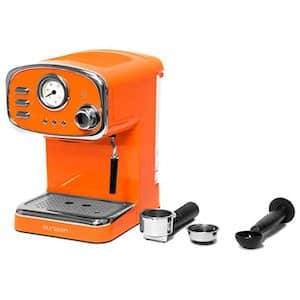
If the function is not provided, then the filling will have to be stopped independently. The remaining functions are insignificant and are more of an auxiliary character.
Additional elements / valves
Any built-in additional function affects the price, but it can also affect the quality of the final product. For example, a three-code valve (solenoid) can be taken into account. With it, you can instantly stop dispensing, without dripping, and dry the coffee pod for easy filter cleaning.
Electronic boiler temperature control
The so-called PID contributes to a uniform temperature distribution, which has a positive effect on the final taste of the coffee product. Its presence is a sign of the middle, or even the professional class.
Customer Reviews
If you have something to say on the topic of the article, please leave a review in the form below.
Your review will help someone make a choice. Thanks for sharing your experience!
This review has no replies yet.
Useful video
The video provides an overview of the most popular models at the moment:

A carob-type coffee maker is a useful device for connoisseurs of invigorating drinks. Thanks to him, you can not only get a classic espresso at home, but also save valuable time communicating with family and friends.
When choosing, be sure to pay attention to the build quality, power and principle of operation.
